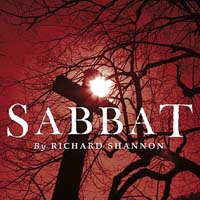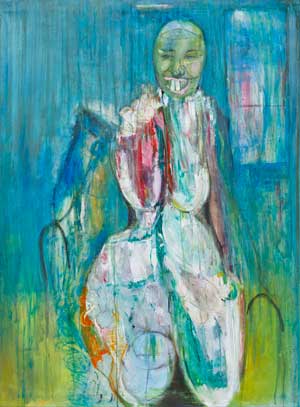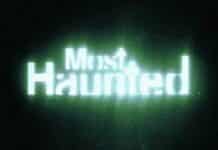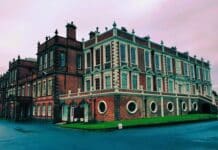L.H. DAVIES looks back at the story of the Pendle Witches of Lancashire, who were executed in 1612…
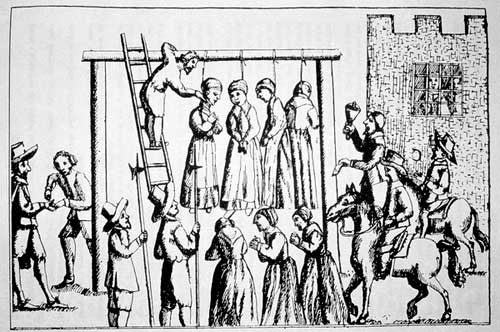
Pendle Hill, situated between Burnley and Clitheroe in Eastern Lancashire, rises 557 metres above sea level. This natural landmark lends its name to the surrounding borough of Pendle; now renowned for what has become known as England’s Salem, it is perhaps the most well-known witch trial in the country.
Though the most famous of British witch hunters was no doubt Matthew Hopkins in the 1680s, the accusers of the Pendle Witches, sent to trial in August of 1612, were Justice Roger Nowell and Nicholas Bannister.
Suspicious of the actions of those present at the Great Assembly and Feast at Malkin Tower, the men ventured out on the night of Good Friday into Pendle Forest; their aim was to capture those, who, it was said were partaking in the ways of the devil, of whom there were a total of 19.
Names of the Pendle Witches
Most notorious of these witches, was Elizabeth Southerns, also known as Demdike, and Anne Whittle, known as Chattox. Both women had initiated close family members into their group: Demdike’s children and indeed, her grandchildren, whilst Chattox had initiated her daughter, Anne Redferne. Another witching family involved was the Device family, consisting of Elizabeth and her children, James and Alison.
In her ultimate confession to the court, Demdike describes how she became a witch. She stated that 20 years previously whilst returning home from begging, she was met by the spirit of a boy near a stone pit at Gouldshey, within the forest. The spirit bade her remain with him and informed her that were she to give him her soul, she could have anything she wished in return.
Confessions were also drawn from Alison Device, James Device and Chattox, though how these confessions were obtained it is not said. Of the original 19 accused, 11 were sentenced to be executed, however only 10 of them were eventually put to death after Demdike died whilst still incarcerated.
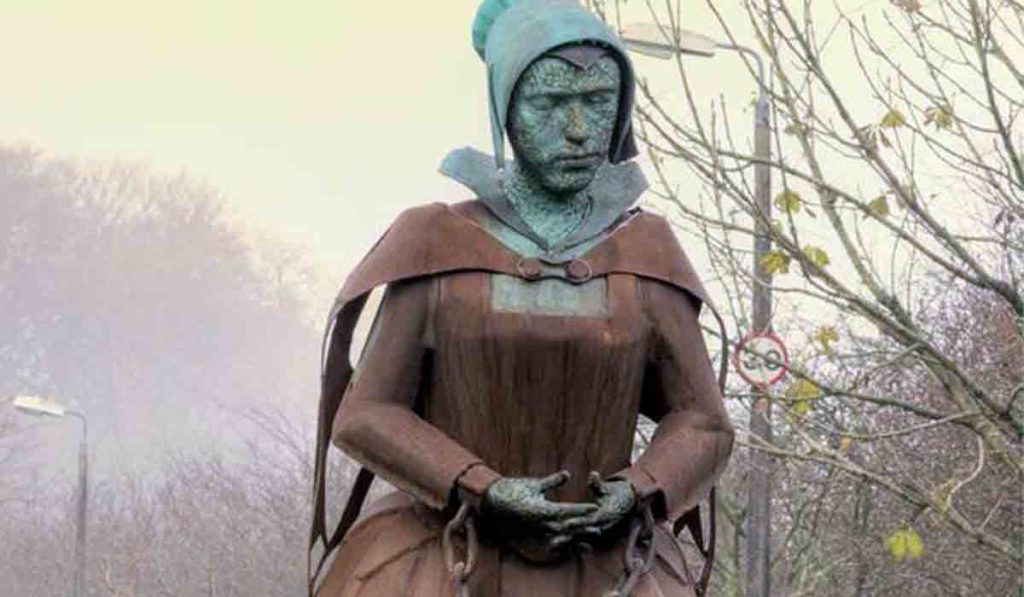
The 10 were executed for the crimes of ‘bewitching to death by devilish practices and hellish means’, at least 16 fellow inhabitants of Pendle; another supposed victim of the witches was pedlar John Law, who it is said was bewitched to lose the use of his limbs after refusing Alison Device pins without payment.
It is interesting to note that there were eight acquitted of these supposed crimes and there seems little to no evidence as to how it was the accusers found those they executed more guilty or why the eight who survived were spared their lives.
It is fair to say that to be exonerated when accused of such crimes in these times, was exceptionally rare, and so perhaps we can at least be grateful that there were eight who were spared the tragic fate of their fellows.
400th Anniversary of Pendle Witch Trials
(Article originally published on Spooky Isles on 10 July 2012.)
July 2012 marks the 400th anniversary of the infamous Pendle Witch Trial. ANDREW GARVEY reports on a theatre production which explores the historic event.
Four hundred years on, the Pendle Witch Trial of 1612 is one of the most famous examples of the English legal system trying and executing “witches”.
It’s also currently attracting appreciative audiences to theatres for a play written by the acclaimed Richard Shannon.
First performed in 2009 and revived for the 400th anniversary, Sabbat dramatises the story of four of the people affected by the trials – the magistrate Roger Nowell, his wife Judith and two of the accused, Alice Nutter and Jennet Preston.
Performed at theatres “in the round” – no real stage, audience members on all four sides, minimal props and a heavy reliance on writing, acting and lighting – Sabbat effectively and convincingly uses its cast of four actors to explore how gossip, superstition and wild accusations could lead to nine women and two men being hung for witchcraft.
READ: Mr Fox’s Mendle – based on Pendle Witches!
The Pendle case is so well remembered because so many were hanged at once and because clerk of the court Thomas Potts published a long and detailed account of the trial in 1613.
Centred on the Pendle Hill area – near Lancaster – the trials took place against a backdrop of official efforts to root out secret Catholics and began when the family of a pedlar complained to Magistrate Nowell that their relative had been cursed and injured by local witch Alizon Device.
The pedlar, John Law, appears to have suffered a stroke but given the widespread belief in the potency of witchcraft at the time, this was unsurprisingly ascribed to “Devilish and wicked arts”.
Investigating, Nowell and another magistrate heard testimony and confessions that implicated several more, including other members of Alizon’s family. Not long after, word reached Nowell of a Good Friday gathering at which several of the suspects alongside healers, beggars and others who were essentially ‘known’ witches had met.
This Sabbat (secret, midnight meeting of witches) provoked further investigation and, in August of that year, a trial at Lancaster Assizes. One attendee, Jennet Preston, who is portrayed in Sabbat as a deeply confused young woman, was tried and hung at York a month earlier.
Some of the accused, whether through genuine belief in their own powers as witches, or harsh interrogation tactics, or what we would today call mental health issues, confessed to their crimes.
Others maintained their innocence but in the end, just one of the accused was found not guilty and another died in prison.
Alice Nutter who in Sabbat, nurses Howell’s wife through an ultimately tragic pregnancy (plenty of dramatic interpretation here) made no confession but on stage, and in the eyes of many historians, was simply a wealthy Catholic widow who dabbled in healing and herbs whose understandable secretiveness about her religion made her an easy target for malicious lies and accusations.
While it seems incredible today that people were executed for witchcraft on the most preposterous or flimsy of evidence (the testimony of a frightened nine-year-old, making a few clay effigies or having simply been accused of attending a late night gathering) 17th century England was in many ways still a very brutish, primitive place.
And thanks to its superstitions, religious turmoil and basic human frailty, the 12 Pendle “witches”, and many more like them, were dragged through the courts and strung up for their curious, so-called crimes.
For more about the Pendle Witches see: Thomas Potts’ account of the trial, The Wonderfull Discoverie of Witches in the County of Lancaster is available here.
Joe Hesketh: A Pendle Witch Trial Investigation
(Article originally published in Spooky Isles on 8 October 2012.)
Artist JOE HESKETH seeks to understand the horrors of the Pendle Witch Trial through art
Being a child in Pendle was like living on, what would now be familiar as, a Harry Potter film set. Some of the older children thought I was a bit odd, so I took advantage of this and played on being different and standing out. I played at making up my own spells, creating perfume from petals, and things like that. These games made me happy and I thought they gave me the upper hand and made me special – just like the witches, I guess. Over the years people have bought me spell books and I still do well wishes today.
I’ve always been intrigued with the Pendle story and wanted to look at it closer and, through doing this, A Pendle Investigation developed. I wanted to connect with the story in celebration of the 400th anniversary by investigating the known facts to build a body of work.
My work is mainly about my life and, for me, Pendle, was the natural step and progression in my artistic journey. Lots of things have changed in 400 years but, you know, lots have not. The Pendle Witch Trials are revered in popular culture but usually misunderstood in the context of their time. I really want people to see the true story of injustice and the real story about people of the land who were basically healers rather than evil magicians.
In 1612, these people were dreadfully misjudged and, even today, some are still quick to judge a book by its cover.
I get this all the time, people judge me instantly and it seemed to be the same with the witches, that people judged them for being different. I’m not saying that people don’t accept me, but that people like to put other people in boxes. I think this shows the shallow nature of our society. People are not always what they seem to others.
The twelve accused of witchcraft lived around Pendle Hill and were charged with the murders of ten people. Of the eleven who went to trial – nine women and two men – ten were found guilty and hanged. It has been estimated that all of the English witch trials that took place between the 15th and 18th centuries resulted in fewer than 500 executions; the Pendle Witch Trials account for more than two per cent of that total.
If the witches who were tried were guilty of anything, it was of being simple folk who were simply trying to survive. Most were very poor, single women with no men to support them. If anything they were of guilty of just being different, having different beliefs and an understanding of the earth and herbal medicines.
I wanted to really feel and understand the story, not just read the books, which I had already done. So I thought, why not walk the path and follow in their footsteps. As a result, in 2011, I spent four days walking the long Purgatory Trail that links Pendle Forest and Lancaster Castle, the two main sites of the infamous Trials.
I don’t think I was fully prepared for the way it affected me. I was on my own for long periods of time and it was a very powerful experience. One day it felt as if they were following me; it was eerie, I looked back at one point and for a split second I saw four women sat down wearing dark clothes.
The next second there were only bushes. I’d been thinking about the witches a lot, it’s hard to understand that this is the actual road they were taken on. Obviously things have changed – the tarmac for one – but when you look around and see the ancient twisted trees and the bubbles of the trickling river, you can imagine yourself right there. Also, the weather was atrocious when I walked – I’d wanted it to be grim, but not this grim. I was soaked through and miserable but that was nothing in comparison to the sufferings of those women. After all, I wasn’t hung at the end.
Although it happened so long ago, these events mark the society we live in today, ranging from bus routes named the Witchway, the décor of the local pubs and local ales named after themed links. Some people still don’t want to talk about the Trials and some church schools still won’t cover the story as history. Pendle is an area where many new cultures have settled, yet they are still treated differently because of their beliefs – being different isn’t always welcomed and probably never will be.
People up to now have been really moved with the work, more so if they know the story, but I hope a connection is made with the images even if they don’t. From my experience, most people in London haven’t even heard of the Pendle Witches so I think it’s great education and helps to put the area on the map. I aim to bring a contemporary outlook to the violent story, resonating with my own experiences as a woman of Pendle.
A Pendle Investigation was at The Newman Street Gallery, 18 Newman Street, London W1T 1PE from Wednesday 31st October – Thursday 22nd November 2012.


